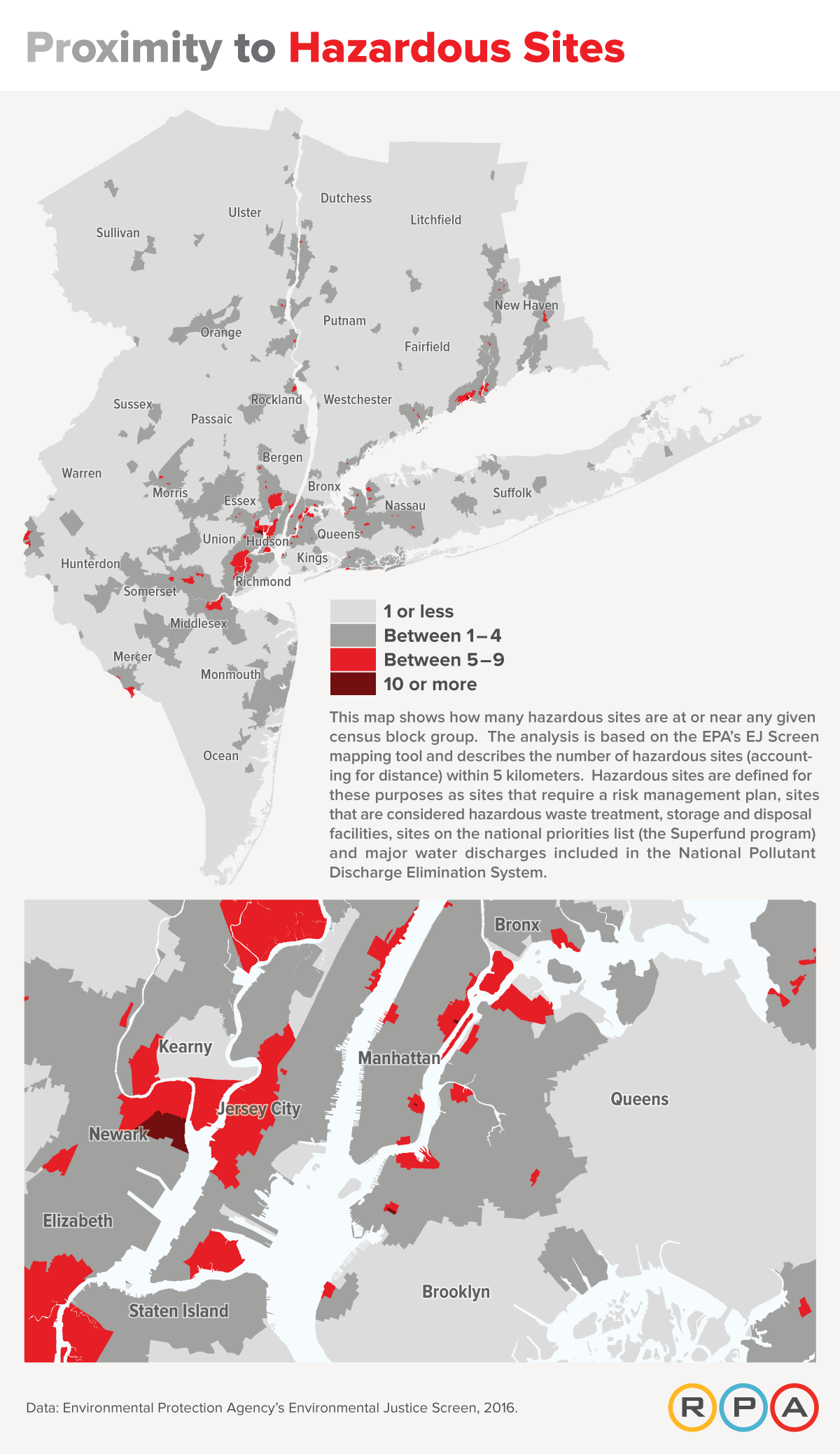The Trump administration is expected to propose deep reductions in the budget of the U.S. Environmental Protection Agency, a move that has national implications for air- and water-quality programs and efforts to combat climate change. It also would have profound consequences for the health and environment of the New York metropolitan region, especially in low-income communities whose neighborhoods are burdened with a greater share of pollution and hazardous sites.
In the New York metropolitan region, with its dense population, deep industrial legacy and rapidly aging infrastructure, the EPA plays a critical and multi-faceted role. The agency enforces environmental laws and also awards grants and other funding to maintain clean air and water. In fact, the majority of EPA’s budget is allocated for grants that help to to upgrade and better manage water and wastewater infrastructure; clean up and revitalize contaminated sites; monitor and improve air quality; support watershed planning efforts; and boost environmental research and education in schools and universities.
The environmental resurgence that we’ve experienced in the tri-state area over the past few decades couldn’t have happened without this combination of enforcement and funding. What today are verdant waterfront parks and greenways overlooked by some of the city’s newest development were once industrial wastelands and dumping sites.
Yet there is still much work to be done. Superfund sites such as Newtown Creek, the Gowanus Canal, the upper stretches of the Hudson River and the lower stretch of the Passaic River are all at different points along their cleanup timelines. Individual communities, especially those that are home to low-income residents, rely on the EPA to fund and facilitate smaller cleanups and neighborhood revitalization in places like Red Hook, Brooklyn, and the New Jersey community of East Trenton. And with some of the oldest infrastructure in the nation, the region depends on EPA funding to ensure the safety of the region’s drinking and wastewater systems.
As the consequences of climate change accelerate, including more frequent and intense storms, sea level rise and extreme temperatures, EPA enforcement and funding will only become more critical. Cutting staff, ending timely programs and slashing grants would be a severe blow to the region at a time where we are still climbing our way out of our toxic legacy.

Photo: Gowanas Canal

